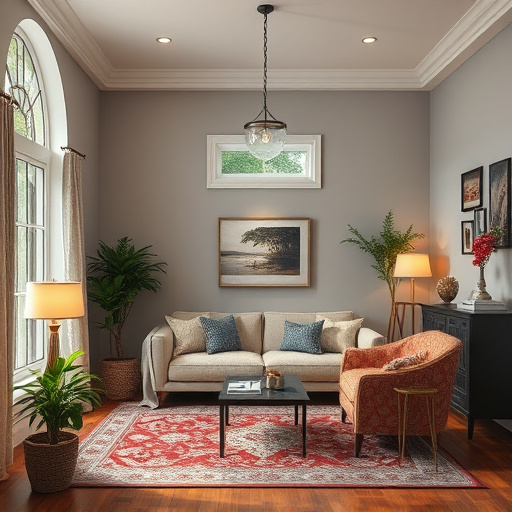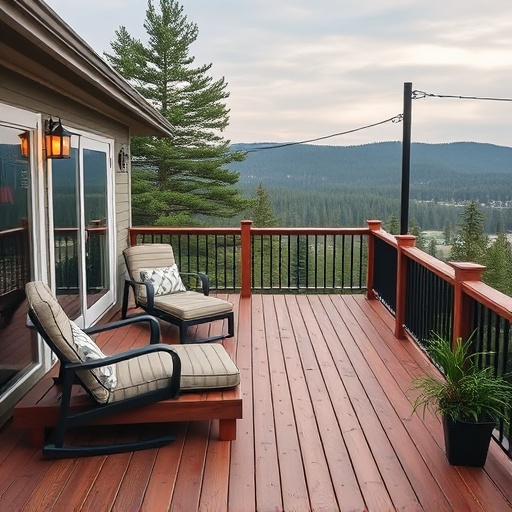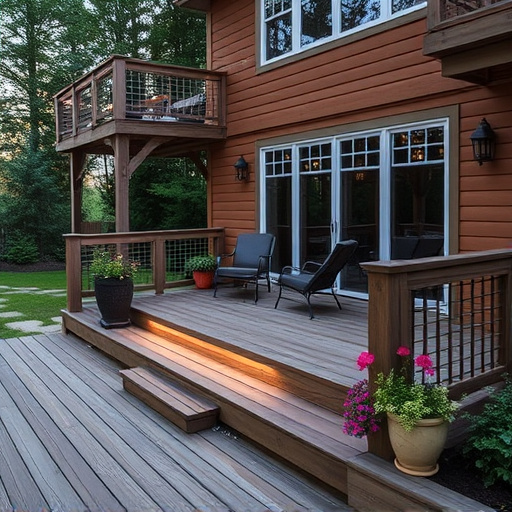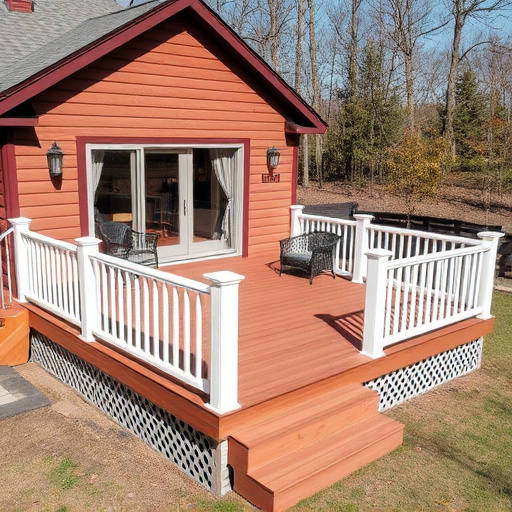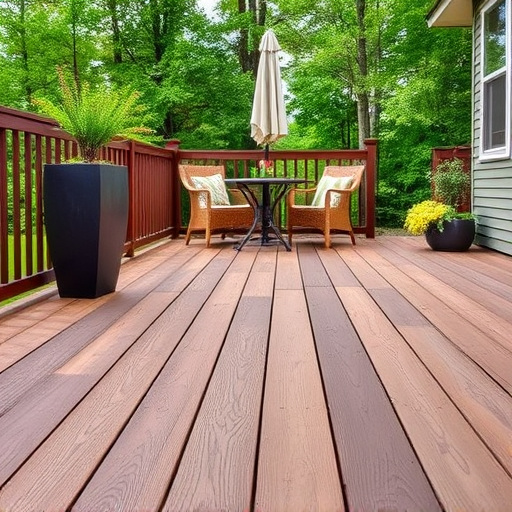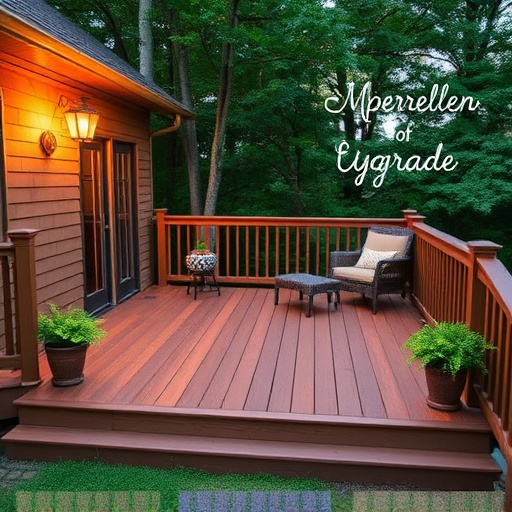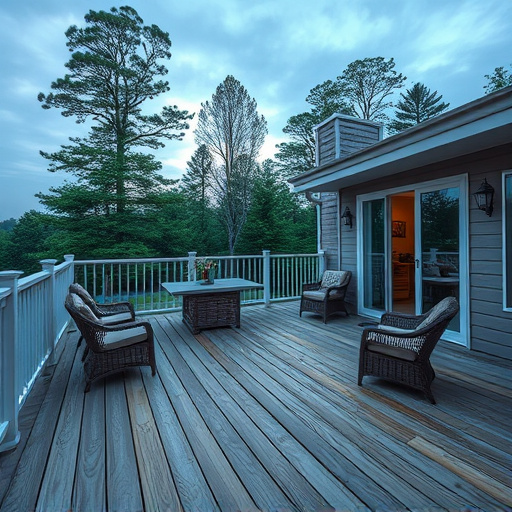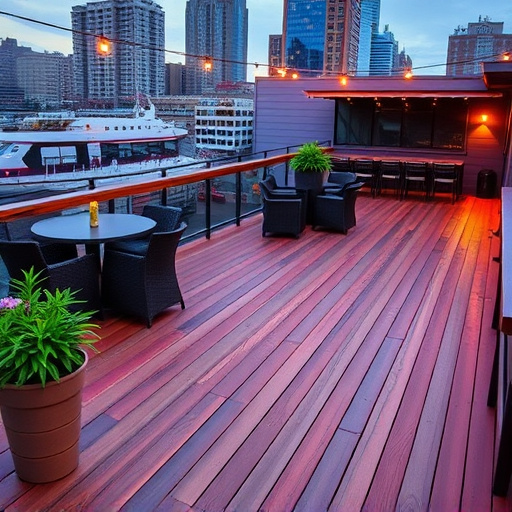Deck railings are crucial for safety and functionality in deck planning, with local building codes and material choices guiding design. Prioritize material selection from wood, metal, composite, or integrate siding/roofing features. Ensure proper spacing (max 12" between spindles), height (36" above deck surface) and style while adhering to building codes. Professional siding and roofing services offer expert guidance for optimal deck planning.
Planning deck railings is a crucial part of successful deck planning. This guide will walk you through the essential steps, from understanding safety standards and defining purposes to selecting materials and designing styles that enhance both functionality and aesthetics. Whether you’re building new or remodeling, mastering deck railing design ensures a safe, attractive, and durable addition to your outdoor living space. Discover key considerations for each stage of the process.
- Understanding Deck Railing Purposes and Safety Standards
- Material Options for Deck Railings: Aesthetics and Durability
- Designing Deck Railings: Spacing, Height, and Style Considerations
Understanding Deck Railing Purposes and Safety Standards
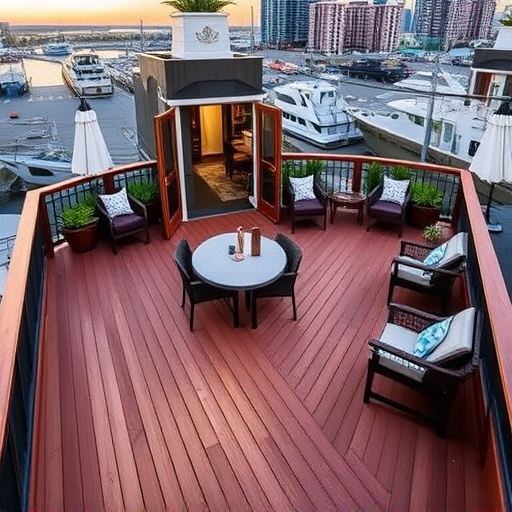
Deck railings serve both functional and safety purposes in deck planning. They provide a critical barrier to prevent accidental falls, especially in elevated areas of your exterior home improvements. Understanding local building codes and safety standards is essential when incorporating railings into your deck design. These guidelines ensure that your deck remains a safe haven for you and your family.
When considering exterior home improvements, it’s crucial to consult with professionals who can advise on the best materials and designs for your railing system. A roof consulting expert or professional siding contractor can offer insights tailored to your region and climate, ensuring not only compliance with safety standards but also long-lasting durability.
Material Options for Deck Railings: Aesthetics and Durability
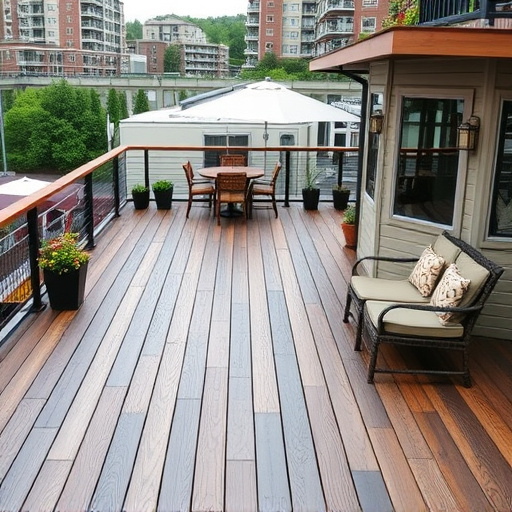
When planning deck railings for your deck project, one of the primary considerations is selecting the right material that strikes a balance between aesthetics and durability. There are several options available in the market, each with its unique characteristics. Wood has long been a popular choice due to its natural beauty and warmth, but it requires regular maintenance to prevent rot and decay, especially when exposed to varying weather conditions. Alternatively, metal railings offer a modern look and are highly durable, requiring minimal upkeep. Aluminum, for instance, is lightweight, corrosion-resistant, and easily customizable, making it a popular pick among homeowners.
For those seeking a blend of natural appeal and low maintenance, composite materials are an excellent choice. These materials mimic the appearance of wood but are made from a combination of plastic and wood fibers, offering superior durability and resistance to rot, mold, and pests. Moreover, incorporating siding and gutters or roofing and siding during deck planning can enhance both the functionality and visual appeal of your outdoor space, ensuring your deck railings complement the overall exterior home improvements.
Designing Deck Railings: Spacing, Height, and Style Considerations

When designing deck railings for your deck planning project, several key considerations come into play to ensure safety and aesthetics. First, spacing between the rails is vital for both functionality and visual appeal. Typically, spindles or vertical supports should be placed no more than 12 inches apart to provide adequate support while allowing for a clear view and circulation of air. This spacing also aligns with safety standards, ensuring there are no gaps large enough for a child or pet to fall through.
Height is another critical aspect, as railings must meet specific height requirements set by building codes. Generally, deck railings should stand at least 36 inches above the deck surface to prevent falls. However, certain areas like stairways may require higher railings. As for style, options are abundant, from traditional vertical spindles to modern cable systems or even glass panels. Choose a design that complements your deck’s overall aesthetic while adhering to local building codes and the expertise of professional siding services or roofing solutions.
When planning your deck, consider that the railing is more than just an aesthetic addition; it’s a vital safety feature. By understanding the purposes and safety standards, exploring durable material options, and thoughtfully designing railings that meet spacing and height requirements, you can enhance both the functionality and beauty of your outdoor space through meticulous deck planning.






